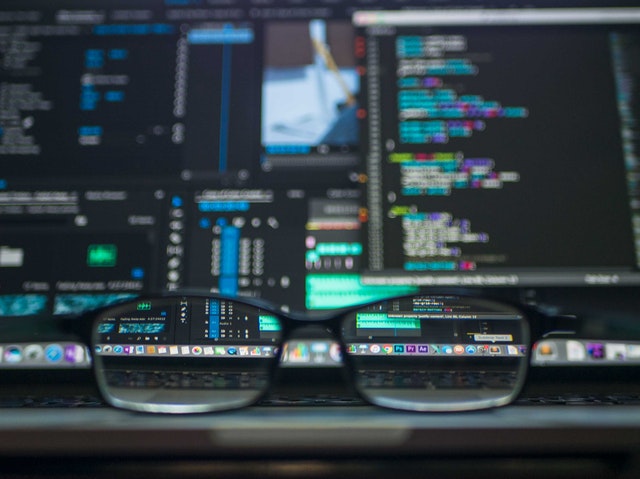Table of Contents
To become a data scientist one must know the things that surround the profession. This article will explain what is data science and the career it can give.
A data scientist is a person who can work with vast amounts of data and extracting analytical insights. They inform the investors of their findings. They have a wide variety of academic profiles. Most of them have professional education. Data science degrees can cover a broad variety of subjects. Subjects mostly include machine learning, data wrangling, and data visualization. They are qualified to collect, organize, and interpret data. They assist people from all backgrounds of life and industries.
Who is a data scientist?
A data scientist collects and analyses data intending to come to a decision. They use a variety of methods to do this. They also develop extremely developed algorithms that are being used to identify trends. They transform data from jumbled statistics into something that is beneficial to a company or organization.
What does data mean in science?
Facts or statistics, as well as stored information in and used by a system, are referred to as data. Data in a form that a computer can store and manage. Quantitative and qualitative data are the most common types of data. Quantitative data is numerical information that is calculated with instruments like a ruler or Vernier caliper. It refers to the appearance, smell, shape, or audio of something that cannot be expressed in words.
You’re gathering qualitative data when you notice that milk leaves a darker stain on a black shirt than a cold drink. Furthermore, in qualitative research, we examine the consistency of systems. We ponder whether systems operate quickly or slowly. Also analyze websites to see whether they are suitable for other devices such as mobile, iPad, and laptop (looking for responsiveness.
What is data science definition?
Data science is a discipline that integrates domain knowledge, computer programming, mathematics, and statistical knowledge to derive useful insights from data. Machine learning algorithms are applied to data, script, images, video, audio, and other data sources artificial intelligence systems. Machine learning can perform tasks that would normally require human intelligence.
What is data science for example?
The analysis of data is known as data science. It’s a mash-up of different techniques, approaches, algorithms, and processes. Furthermore, it entails the storage, management, and analysis of data to derive valuable information from both structured and unstructured data. It also contains computational concepts for extracting information from unstructured data. The few most common examples of data science are
- Disease identification and analysis
- Real-time optimization of transportation and logistics paths
- Fraud prevention
- Healthcare advice
- Digital ad automation
- Banking and Finance
- Manufacturing
- Transportation
- Health care (drug discovery, medical image processing, genetics and genomics, diagnosis)
- E-Commerce
What are the differences between a data scientist and a data analyst?
A data analyst trawls through data. He creates reports and visualizations that demonstrate what insights are hidden in the numbers.
A data analyst is usually part of an interdisciplinary team that determines the organization’s priorities. Alongside he oversees the data mining, cleaning, and analysis process. To create and communicate their results, the data analyst employs programming languages such as R and SAS. Visualization tools such as Azure, PowerShell including SQL and communication skills are employed.
A data analyst interprets existing data. Data analysts need to know how to use database engine tools, business analytics software, and predictive operating systems. A data analyst typically looks at services from a source, such as a CRM system. A data analyst is not supposed to have the strong business acumen or advanced data visualization skills. A data analyst will answer the questions posed by the company.
A data scientist is interested in the design of data processing systems. Also in the creation of algorithms and statistical analytics. As a result, data scientists will have to devote more time to developing software, automated systems, and data structures. A data scientist’s emphasis may be on creating new tools and techniques. Which will extract the knowledge that a company needs to solve difficult problems. To understand the consequences of the data, it’s also helpful to have business instincts and crucial skills.
A data scientist develops new methods for gathering and analyzing data that analysts can use. Python, Java, machine learning, and artificial intelligence are commonly used by data scientists to manipulate and interpret information. A data scientist looks at data from different sources. A data scientist’s task is to turn an idea into a business story. It utilzes strong business acumen and data visualization skills. A data scientist will create questions whose answers are likely to be beneficial to the company.
How is data analysis differ to data science?
In certain cases, data analysts are not required to have hands-on machine learning experience or create statistical models. A data scientist’s primary responsibility is to build statistical techniques and be knowledgeable about machine learning.
The majority of Data Scientists or Data Analysts are more active on their projects when they have exposure to a ready-to-use database and different libraries of solved code snippets.
How to get into data science?


Brush up on your math abilities as data science should be an easy transition. Learn a programming language Data science is less about the reputation of your alma mater and more about what you know and how well you can demonstrate your specific skills. Take on side projects or internships to supplement your income. Begin your career as a data analyst or data scientist, who not only interprets data but also uses coding and mathematical modeling skills. Work hard and network even harder to achieve your goals. Explain your career transition to potential employers
What skills are needed to be a data scientist?
Following are the skills required for a data scientist:
- Math & Statistics
- Computer Science
- Machine Learning Skills
- Distributed Computing frameworks like Hadoop.
- Programming languages like Python, R, SAS, MATLAB, SQL, Hive, and Scala.
- Business Acumen
- Story-telling and Data Visualization.
- Data Mining and Data warehousing
FAQ
Is it hard to become a data scientist?
Data Science is a combination of hard and soft skills such as communication is a soft skill. Student/learner can learn easily hard skills such as programming. It is not impossible to achieve a goal student/learner just need to put some effort. It takes time to get experience and grip in the area student/learner is interested so that get in-depth of the field and remain updated with the latest developments.
Do data scientists get paid well?
Data Scientists are paid according to their skills and experience there are levels are set and paid accordingly such as at beginner level salary lies between $60K to $90K and middle-level scientists are paid from $150k to $190K and experienced scientist gets paid up to $250K.
How long does it take to become a data scientist?
In different areas degrees for data scientists vary from a minimum of 1 year to 8 or more years. 1-year diplomas in which only basics can be learned and there is 4-5-year degree offered by different most reputed universities on an international level where they teach all concepts detailed and basics which are useful, beneficial and helpful for data scientists. In this era, learners learn and practice things in parallel and get experience. After completing their degrees, they get jobs of beginner level and enhance their skills in the industry.
What are the 8 steps to becoming a data scientist?
Here are 8 Simple Steps to Becoming a Data Scientist.
- Improve statistics, math, and machine learning skills.
- Learn how to program.
- Recognize databases.
- Data munging, visualization, and reporting are all part of the master data munging process.
- With Big Data, you can take your game to the next level.
- Experiment, train, and network with other data scientists.
- Internships, boot camps, or finding a career are all options.
- Follow the group and participate in it.
Is being a data scientist a good career?
Professionals in data science are required in almost every industry, not just technology. In reality, the five largest tech firms in the United States Google, Amazon, Apple, Microsoft, and Facebook employ just half of the percentage of the country’s workforce. However, specialized education is usually needed to break into some of these high-paying, in-demand positions. Data scientists are highly educated 88% have at least a bachelor’s degree, and 46% have a Ph.D. and although there are exceptions, a very strong educational background, and good communication skill is normally needed to develop the depth of understanding required to be a data scientist, a leading Big Data website.
Expertise in data science is in high demand because it contributes to observable and measurable market results. As the development of information scientists grows every day, embracing a career in data science is well worth the time or effort and investment.
What to study to become a data scientist?
Following are the most common and straight steps to become a data scientist:
- Achieve a bachelor’s degree in information technology, computer science, mathematics, physics, or a related field.
- Obtain a master’s degree in data science or a closely related field such as big data, data mining, data warehouse, machine learning, etc.
- Obtain experience in the sector in which you wish to serve such as healthcare, physics, business.




